Articles
- Page Path
- HOME > Kosin Med J > Volume 32(1); 2017 > Article
-
Case Report
A Case of Cardiac Arrest due to Multivessel, Diffuse Coronary Spasm in Moyamoya Disease - Young Min Choi1, Jung Woo Choi1, Dong Ho Kang2, Choong Hwan Kwak1, Jin Yong Hwang1, Jin Sin Koh1
-
Kosin Medical Journal 2017;32(1):111-117.
DOI: https://doi.org/10.7180/kmj.2017.32.1.111
Published online: January 19, 2017
1Division of Cardiology, Department of Internal Medicine, Gyeongsang National University Hospital, Korea
2Department of Neurosurgery, Gyeongsang National University, School of Medicine, Korea
- Corresponding Author: Jin Sin Koh, Division of Cardiology, Department of Internal Medicine, Gyeongsang National University Hospital, 79, Gangnam-ro, Jinju-si, Gyeongsangnam-do, 52727, Korea Tel: +82-55-750-8873, Fax: +82-55-758-9122, E-mail address: kjs0175@gmail.com
• Received: August 20, 2015 • Accepted: October 26, 2015
Copyright © 2017 Kosin University School of Medicine Proceedings
This is an Open Access article distributed under the terms of the Creative Commons Attribution Non-Commercial License (http://creativecommons.org/licenses/by-nc/3.0/) which permits unrestricted non-commercial use, distribution, and reproduction in any medium, provided the original work is properly cited.
- 807 Views
- 4 Download
Abstract
- Moyamoya disease is characterized by progressive stenosis of the distal portion of the internal carotid arteries and fragile collateral vessels in the brain. The precise pathogenesis is still not known. Although extracranial vessel involvement is very rare, coronary arterial involvement has recently been reported. Here, we report a case of diffuse, multivessel coronary spasm leading to cardiac arrest and myocardial infarction in a 47-year-old man with moyamoya disease with no underlying emotional or physical stress.
Fig. 1Cerebral angiogram after injection of contrast demonstrates stenosis in both internal carotid arteries, with net-like collaterals (black arrow) typical for moyamoya disease.
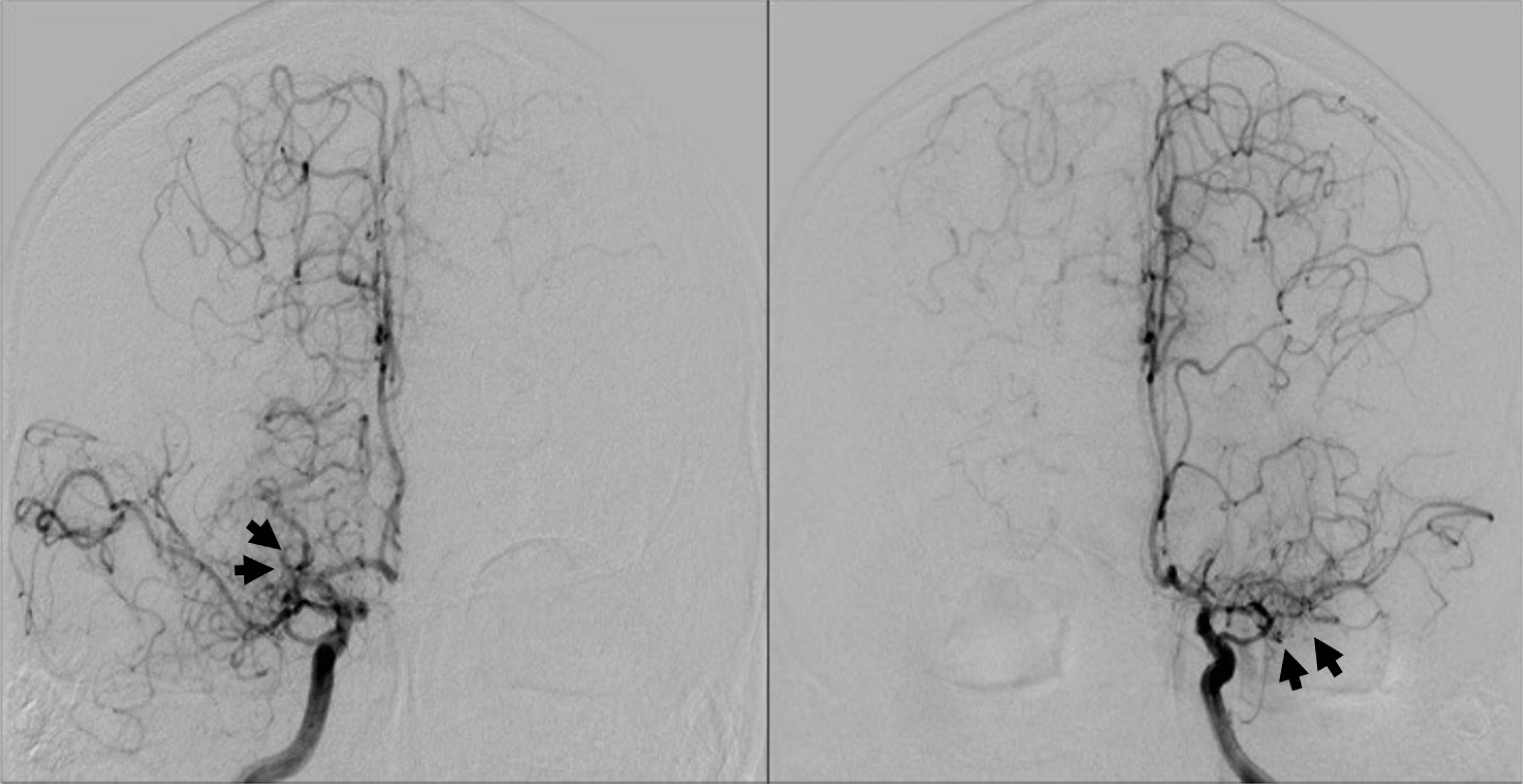

Fig. 2Local hospital ECG 3 years ago for acute chest pain showed ST elevation in leads Ⅱ, Ⅲ, aVF, and V2-V6 (A). ECG after electro-cardioversion: the irregular rhythm converted to sinus rhythm with ST elevation in Ⅰ, Ⅱ, Ⅲ, and V2-6, with frequent ventricular premature complexes (B). Follow-up ECG 5 days later showed ST resolution in Ⅰ, Ⅱ, Ⅲ, and V2-6, and Q waves in V1-5 (C).
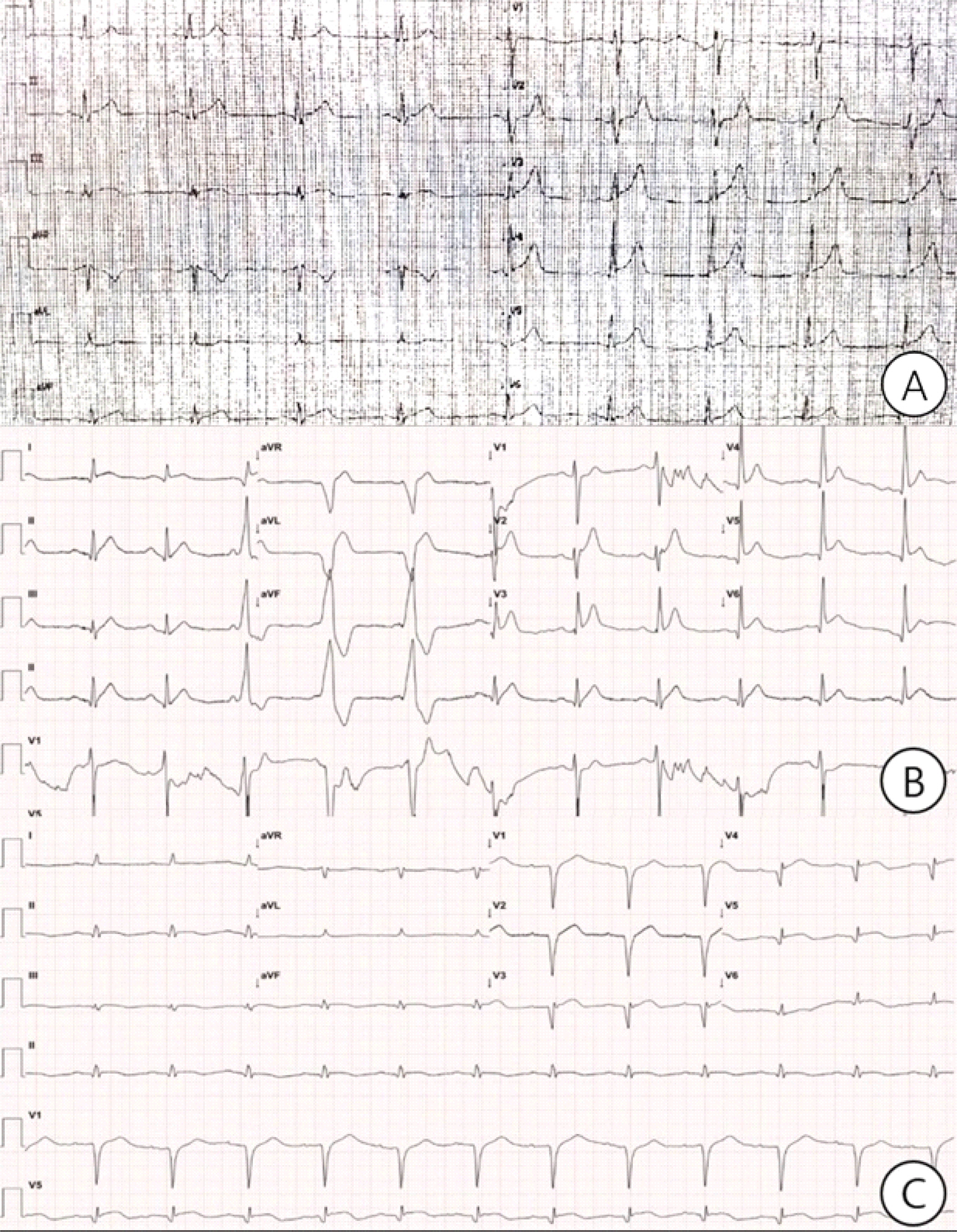

Fig. 3Echocardiography demonstrated akinesis in the entire mid- to apical segments of the left ventricular (LV) wall, with severe LV dysfunction (LV ejection fraction 25%) and mild apical dilatation (white arrow), which suggest stress induced cardiomyopathy (A: systolic phase, B: diastolic phase). Follow up echocardiography demonstrated true apical akinesis, and hypokinesis of the apical anterior septum and anterior LV wall, with improved LV function; LV ejection fraction 45% (C: systolic phase, D: diastolic phase).
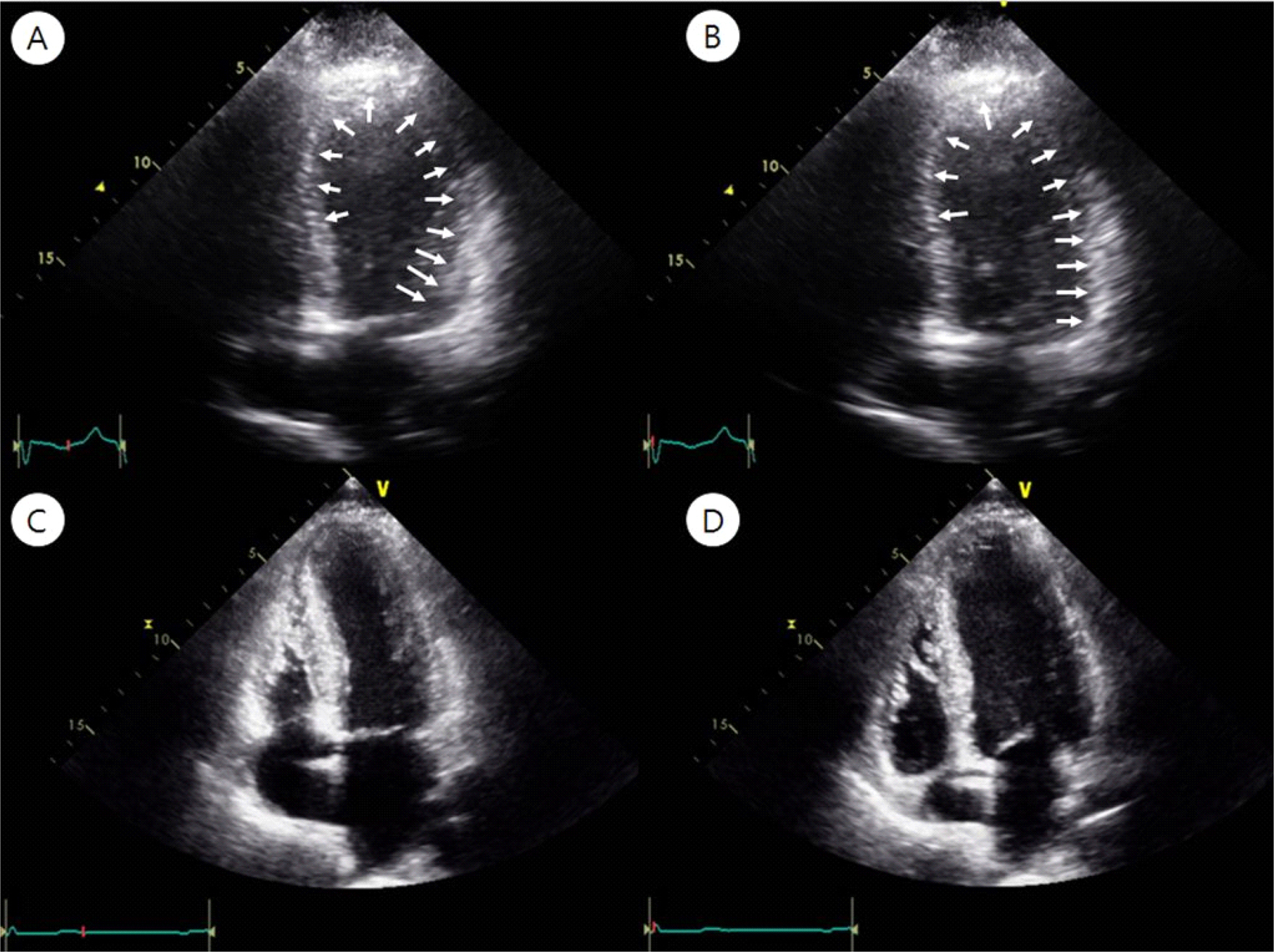

Fig. 4Angiography reveals diffuse spasm of the right (A) and left (B) coronary arteries (black arrow). After intracoronary nitroglycerin injection, spasm was relieved in both coronary arteries (C, D).
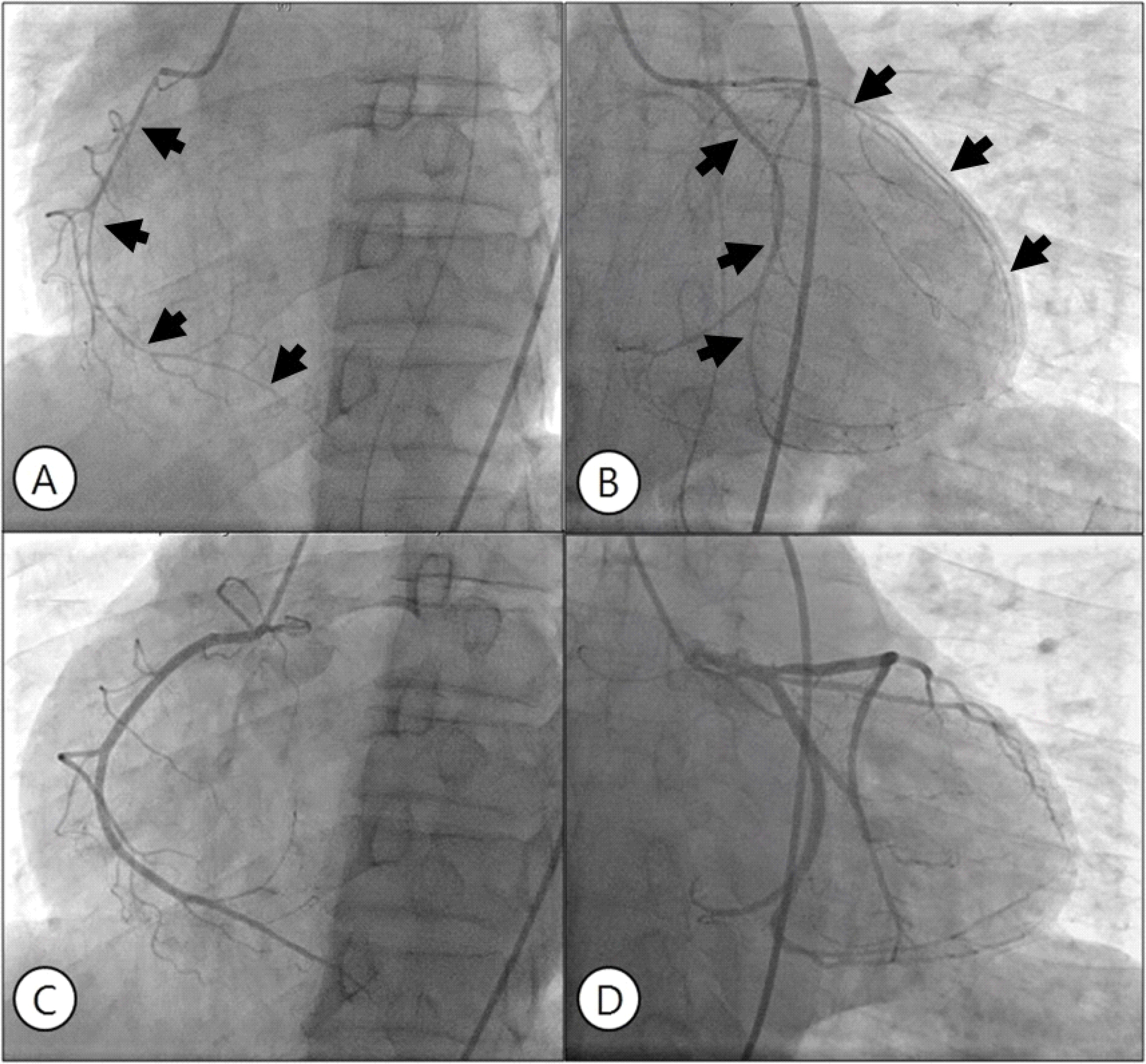

Fig. 5Cardiac magnetic resonance imaging showed subendocardial perfusion defects in the septum, anterior wall, apex, and inferior and lateral walls (A,B), and late enhancement in the same territories (C,D).
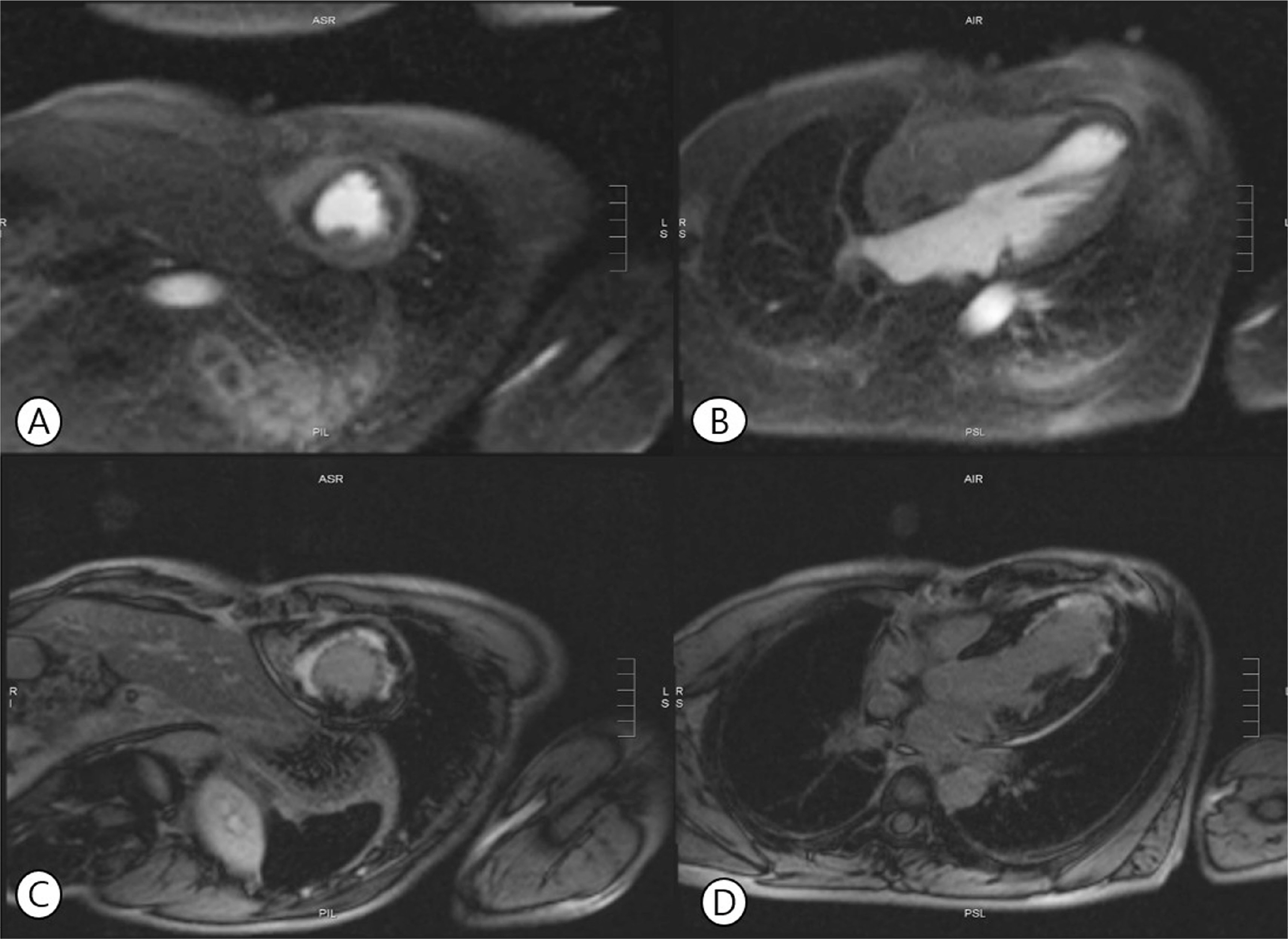

- 1.Scott RM, Smith ER. Moyamoya disease and moya-moya syndrome. N Engl J Med 2009;360:1226–37.ArticlePubMed
- 2.Ikezaki K, Kono S, Fukui MEtiology of moya-moya disease. Pathology, pathophysiology, and genetics in moyamoya disease. In: Ikezaki K, Loftus CMeditors.., editors. Moyamoya disease. New York: Rolling Meadows; 2001. p. 55–64.
- 3.Lee JH, Youn TJ, Yoon YE, Park JJ, Hong SJ, Chun EJ, et al. Coronary artery stenosis in Moyamoya disease: tissue characterization by 256-slice multi-detector CT and virtual histology. Circulation 2013;127:2063–5.ArticlePubMed
- 4.Choi W, Kim YN, Kim KH. Variant angina in moyamoya disease--a correlative etiology and different presentation: a case report. J Med Case Rep 2015;9:86.ArticlePubMedPMCPDF
- 5.Prasad A, Lerman A, Rihal CS. Apical ballooning syndrome (Tako-Tsubo or stress cardiomyopathy): a mimic of acute myocardial infarction. Am Heart J 2008;155:408–17.ArticlePubMed
- 6.Akashi YJ, Nef HM, Lyon AR. Epidemiology and pathophysiology of Takotsubo syndrome. Nat Rev Cardiol 2015;12:387–97.ArticlePubMed
- 7.Deepika A, Reddy M, Shukla D. Paroxysmal sympathetic hyperactivity in a child with moyamoya disease. J Neurosurg Anesthesiol 2014;26:87–8.ArticlePubMed
References
Figure & Data
References
Citations
Citations to this article as recorded by 


 KOSIN UNIVERSITY COLLEGE OF MEDICINE
KOSIN UNIVERSITY COLLEGE OF MEDICINE
 PubReader
PubReader ePub Link
ePub Link Cite
Cite





